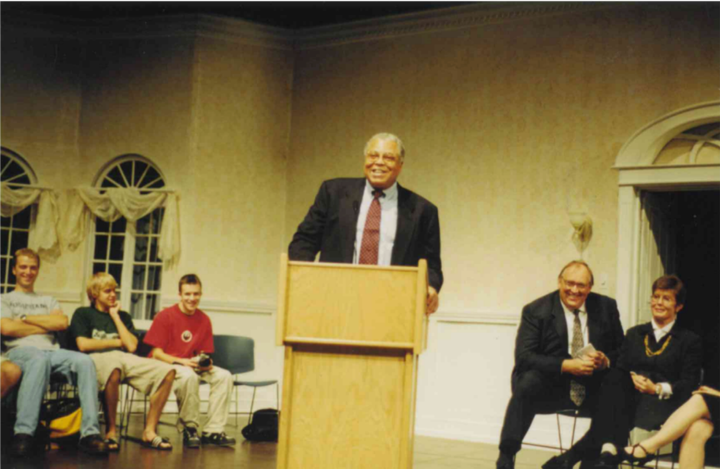LCD Soundsystem revives with an unexpected hit album
STEPHANIE SANCHEZ
Six years ago, New York City and the world said farewell to LCD Soundsystem on what they called their last-ever concert at the Madison Square Garden. On September 2017, the legendary Brooklyn band dropped their fourth studio album to the delight of fans and the alternative rock scene.

American Dream’s release did not trigger the same surprise factor that the now-common way of dropping unannounced albums does. LCD Soundsystem has slowly made its comeback through an occasional single and by headlining music festivals. After their participation in 2016’s Coachella was announced, the band revealed its plans for a new album.
LCD Soundsystem resurrects with the distinctive synths, rhythmic drums and whimsical lyrics that made it the quintessential New York City-cool band in the first place. James Murphy dusted off the classic sound of anthems like “Daft Punk Is Playing at My House” and converged it with the musical influence of icons like David Bowie and Depeche Mode to create American Dream. The result is an odyssey of the senses brought to us through 68 minutes of pure magic.
The album’s music, regardless of their mostly upbeat tunes, touches on loss and fear more than anything. American Dream’s fifth track, “How Do You Sleep?,” captivates the essence of the record with Murphy singing “Standing on the floor facing you / I can’t see you, your impermanence,” finishing with the tearing lyrics “This place is empty / Empty of you.”
A pulsing beat opens the first seconds of “Oh Baby”, the album’s first track. Soon enough, Murphy’s gentle voice joins the synths and the song takes its form as an electronic rock ballad. The relatively slow beat of the opening song is replaced by the clean rhythm of “Other Voices,” where Murphy plays with his and Nancy Whang’s vocals to create a psychedelic track reminiscent of a late ‘70s avant-garde rock band.
The soul of American Dream is encompassed in the long-lasting tracks and haunting lyrics. Murphy’s mastery of electronic rock pairs perfectly with his message of despair and sorrow. The band succeeds on merging the music with the words of an artist who is trying to come to terms with ideas that have troubled humanity since its very conception.
The album’s first single, “American Dream”, brings together everything that the album touches on: loss, fear of change, mortality and overall confusion: “So you feel drained/ And insane/ And insane.”
American Dream’s final song, “Black Screen” starts with a metrical beat similar to that of “Oh Baby”. The gradual incorporation of synths and vocals fall in line with the slow-tempo of the song. The synths fade into the background as a solitary piano arises after the last sung line. The 12-minute song wraps up a masterpiece that transcends the genre and has the potential to become the perfect representation of this chaotic era.
A feeling of nostalgia accompanies American Dream. The album feels like a study on a convulsive society that is as confused as the man with the smooth voice performing deep lyrics in seemingly innocent tracks. The post-punk art rock sound remains untouched in American Dream. The poetry of the lyrics together with the synths, drums and vocals make LCD Soundsystem appear as a modern-day Joy Division: dramatic, talented and, ultimately, iconic.



